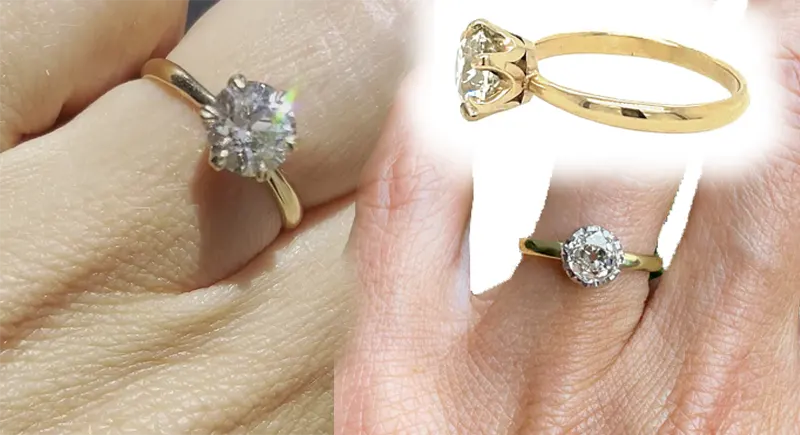When it comes to timeless elegance in the world of engagement rings, the Victorian solitaire stands out as a quintessential choice. This design, characterized by its simplicity and classic charm, captures the essence of romance and sophistication that defines the Victorian era. Dating back to the mid-19th century, the Victorian solitaire has remained a popular selection for those seeking an engagement ring that embodies both historical significance and enduring beauty.
A Brief History of the Victorian Era
The Victorian period, named after Queen Victoria, spanned from 1837 to 1901. This era was marked by significant cultural, technological, and artistic advancements. One of the most notable changes was the rise of the middle class, which made fine jewelry more accessible to a broader audience. Engagement rings became a symbol of love and commitment, and the solitaire style emerged as a favored choice, emphasizing a single gemstone as the focal point of the design.
The Design Elements of the Victorian Solitaire
The hallmark of the Victorian solitaire is its single diamond or gemstone, elegantly set in a simple band. The design often features intricate detailing in the metalwork, showcasing the craftsmanship of the time. Victorian solitaires typically use gold—yellow, rose, or white—as the primary material, reflecting the era’s affinity for rich and warm tones. The solitaire setting allows the stone to take center stage, maximizing its brilliance and sparkle.
The shape of the diamond is another defining feature. While round diamonds were popular, other cuts like oval, pear, and cushion became common during this period, offering a variety of options for couples. The solitaire’s timeless appeal lies in its ability to highlight the natural beauty of the gemstone, making it a versatile choice for various personal styles.
The Emotional Significance
In the Victorian era, engagement rings were steeped in symbolism. The solitary stone represented a deep emotional bond between partners, signifying the commitment to love and fidelity. The simplicity of the solitaire allowed couples to focus on the meaning behind the ring rather than extravagant designs that could overshadow the sentiment. This emotional significance is still relevant today, making the Victorian solitaire a popular choice for modern couples seeking a meaningful representation of their love.
Modern Interpretations of the Victorian Solitaire
While the Victorian solitaire retains its classic roots, contemporary jewelers have embraced the design with modern twists. Many artisans now incorporate vintage-inspired elements, such as filigree work or intricate side settings, while maintaining the fundamental principles of the original design. Couples can also choose unique gemstones, such as sapphires or emeralds, to create a more personalized engagement ring that reflects their individual tastes.
The rise of ethical sourcing has further influenced modern interpretations of the Victorian solitaire. Many jewelers now offer conflict-free diamonds and sustainably sourced materials, allowing couples to choose an engagement ring that aligns with their values. This commitment to ethical practices enhances the emotional resonance of the ring, creating a deeper connection between the couple and their choice of engagement ring.
Conclusion
The Victorian solitaire engagement ring is a testament to timeless beauty and craftsmanship. With its rich history and emotional significance, it continues to captivate couples seeking a classic and elegant design. As modern interpretations breathe new life into this iconic style, the Victorian solitaire remains a cherished choice for those who appreciate its historical roots and exquisite simplicity. Whether opting for a traditional diamond or a unique gemstone, the Victorian solitaire embodies a love story that transcends time, making it a perfect symbol of commitment for generations to come. Embracing the Victorian solitaire is not just a nod to the past; it’s an invitation to celebrate love in its purest form, making every moment a timeless treasure.










